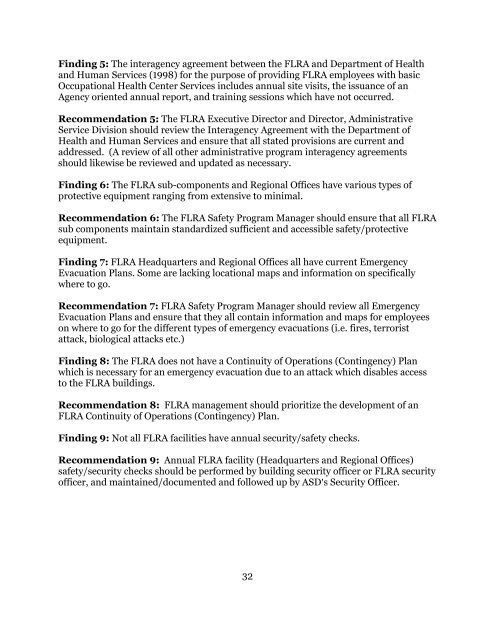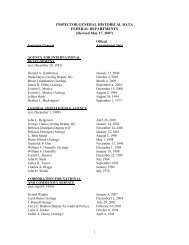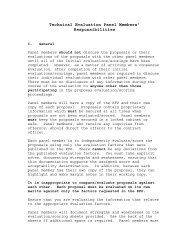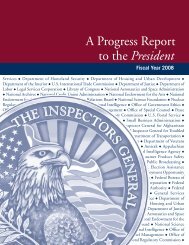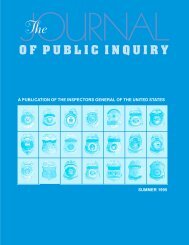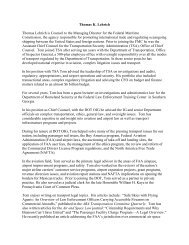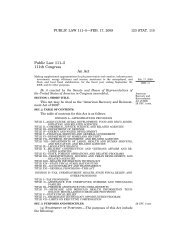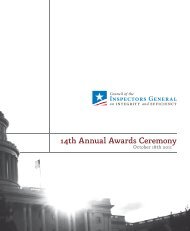Internal Review of FLRA's Occupational Safety and Health
Internal Review of FLRA's Occupational Safety and Health
Internal Review of FLRA's Occupational Safety and Health
Create successful ePaper yourself
Turn your PDF publications into a flip-book with our unique Google optimized e-Paper software.
Finding 5: The interagency agreement between the FLRA <strong>and</strong> Department <strong>of</strong> <strong>Health</strong><strong>and</strong> Human Services (1998) for the purpose <strong>of</strong> providing FLRA employees with basic<strong>Occupational</strong> <strong>Health</strong> Center Services includes annual site visits, the issuance <strong>of</strong> anAgency oriented annual report, <strong>and</strong> training sessions which have not occurred.Recommendation 5: The FLRA Executive Director <strong>and</strong> Director, AdministrativeService Division should review the Interagency Agreement with the Department <strong>of</strong><strong>Health</strong> <strong>and</strong> Human Services <strong>and</strong> ensure that all stated provisions are current <strong>and</strong>addressed. (A review <strong>of</strong> all other administrative program interagency agreementsshould likewise be reviewed <strong>and</strong> updated as necessary.Finding 6: The FLRA sub-components <strong>and</strong> Regional Offices have various types <strong>of</strong>protective equipment ranging from extensive to minimal.Recommendation 6: The FLRA <strong>Safety</strong> Program Manager should ensure that all FLRAsub components maintain st<strong>and</strong>ardized sufficient <strong>and</strong> accessible safety/protectiveequipment.Finding 7: FLRA Headquarters <strong>and</strong> Regional Offices all have current EmergencyEvacuation Plans. Some are lacking locational maps <strong>and</strong> information on specificallywhere to go.Recommendation 7: FLRA <strong>Safety</strong> Program Manager should review all EmergencyEvacuation Plans <strong>and</strong> ensure that they all contain information <strong>and</strong> maps for employeeson where to go for the different types <strong>of</strong> emergency evacuations (i.e. fires, terroristattack, biological attacks etc.)Finding 8: The FLRA does not have a Continuity <strong>of</strong> Operations (Contingency) Planwhich is necessary for an emergency evacuation due to an attack which disables accessto the FLRA buildings.Recommendation 8: FLRA management should prioritize the development <strong>of</strong> anFLRA Continuity <strong>of</strong> Operations (Contingency) Plan.Finding 9: Not all FLRA facilities have annual security/safety checks.Recommendation 9: Annual FLRA facility (Headquarters <strong>and</strong> Regional Offices)safety/security checks should be performed by building security <strong>of</strong>ficer or FLRA security<strong>of</strong>ficer, <strong>and</strong> maintained/documented <strong>and</strong> followed up by ASD=s Security Officer.32


